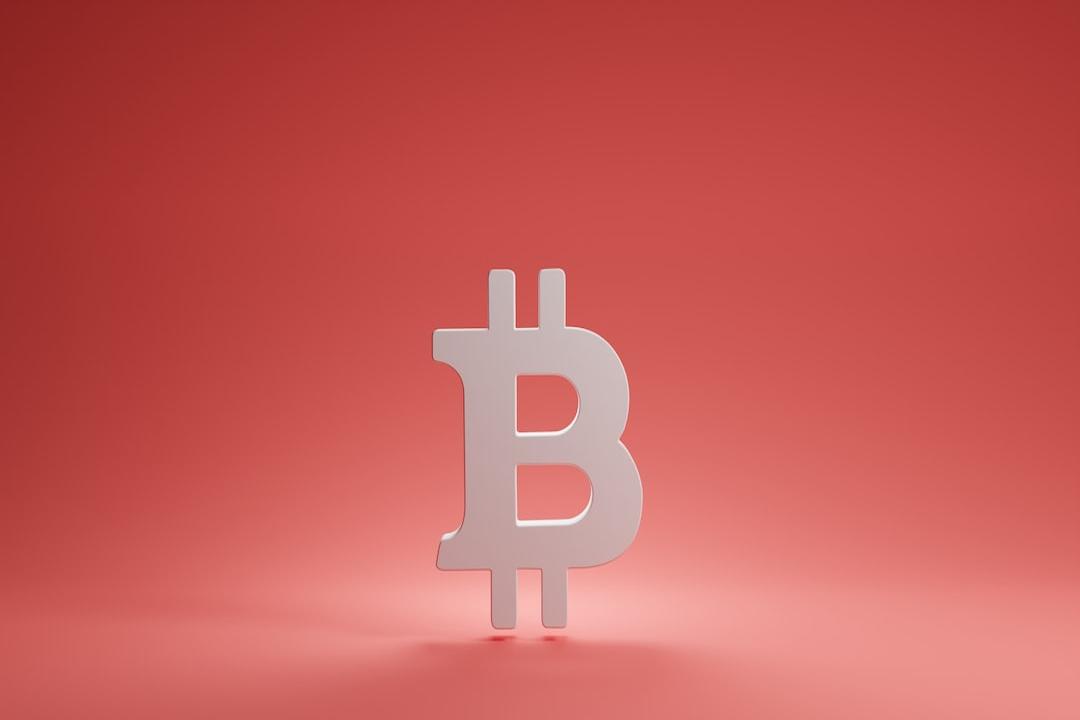CoinWorld reported:
Author: 0xMaiaa, BeWater Research Source: X, @BeWaterOfficial
With the launch of the first phase of the Babylon mainnet a month ago, the introduction of BTC LST on Pendle, and the successive launches of various wrapped BTCs, market attention is consistently being redirected back to BTCFi. The following content will cover the recent key updates on BTC (re)staking and BTC collateralized assets:
BTC (Re)staking:
The importance of ecological strategy for BTC LST
Pendle is entering BTCFi
SatLayer joins the BTC re-staking market competition
BTC Collateralized Assets:
Coinbase launches cbBTC
Multi-chain expansion of WBTC
Active expansion of FBTC
2/ Current competitive landscape of BTC LST:
After rapidly reaching the 1000 BTC cap in Babylon Stage 1, competition among BTC LSTs continues to heat up, with stakeholders vying for staking and yield entry points for BTC and its wrapped assets. In the past 30 days, @Lombard_Finance has achieved rapid growth, with a deposit amount of 5.9k BTC, reaching the current highest TVL, surpassing the long-time leader @SolvProtocol.
Lombard has gained a competitive advantage at this stage by forming strategic cooperation with top re-staking protocol @symbioticfi, providing its participants with richer re-staking yield sources and DeFi participation opportunities from the ETH ecosystem.

3/ The importance of ecological strategy for BTC LST:
In the BTC LST space, ecological strategy has become a key influencing factor in the current competitive landscape. Unlike ETH LRT, which benefits from the mature DeFi ecosystem of ETH and ETH L2 to support downstream applications, BTC LST currently faces more complex considerations, including downstream DeFi application scenarios, the development stage of BTC L2, the combination of BTC collateralized assets across various chains, and integration with re-staking platforms.
At this stage, the choice of ecological strategy will affect the growth rate and the capture of early market share, with the specific situations of each BTC LST provider as follows:
4/ Currently, @Lombard_Finance strategically focuses on the development of the ETH ecosystem. Through partnerships with @symbioticfi and @Karak_Network, Lombard offers rich external rewards beyond @babylonlabs_io for stakers, while $LBTC, as the first BTC LST, receives support from ETH re-staking protocols. Additionally, in terms of LST utility, Lombard is actively promoting leveraged strategies for $LBTC on ETH, with key partners including @pendle_fi, @GearboxProtocol, and @zerolendxyz. Notably, with http://Ether.Fi’s acceptance of $LBTC deposits, $LBTC will benefit from all future downstream applications related to $eBTC, further enhancing its competitive advantage.

5/ In contrast to Lombard’s focused strategy, @SolvProtocol and @Bedrock_DeFi are both actively pursuing multi-chain expansion, with ecological development covering upstream deposit reception and downstream application construction. Currently, the main liquidity for SolvBTC.BBN and uniBTC is concentrated on BNB and ETH chains, while also injecting BTC liquidity into other L2s. Notably, Solv’s strategy requires users to deposit SolvBTC to convert it into SolvBTC.BBN for participation in Babylon, which will boost market demand for SolvBTC and solidify Solv’s core business as a Decentralized Bitcoin Reserve.
6/ Supported by @BinanceLabs, @LorenzoProtocol and @pStakeFinance focus on building in the BNB chain during their initial launch phase. They have already supported the reception of $BTCB deposits and minted LSTs – $stBTC and $yBTC on the BNB chain respectively. Lorenzo’s uniqueness lies in building a yield market based on BTCFi, employing a structure that separates Liquid Principal Tokens (LPT) and Yield Accumulation Tokens (YAT), similar to Pendle’s model, making strategies based on BTC re-staking yields more flexible.
7/ From another perspective, the different ecological strategies of various BTC LSTs—accepting upstream BTC derivatives and minting LSTs—will impact the liquidity and DeFi adoption of BTC collateralized assets across ecosystems. As the BTC LST market continues to expand, this trend will become increasingly significant, triggering a TVL defensive battle among various chains.
8/ Pendle is entering BTCFi:
Recently, Pendle has integrated four types of BTC LST into its token market, including $LBTC, $eBTC, $uniBTC, and $SolvBTC.BBN. The current liquidity and total TVL situation of each LST on Pendle is illustrated in the accompanying charts. Among them, the actual adoption of $LBTC is higher than the surface figures in the LBTC (Corn) pool. As 37% of $eBTC is supported by $LBTC, Pendle’s integration of $eBTC will also benefit Lombard, providing $LBTC holders with more opportunities to optimize yield strategies.


9/ Aside from $eBTC, the other three LSTs have partnered with another key participant, @use_corn. Corn is an emerging ETH L2 with unique designs of veTokenomics and Hybrid Tokenized Bitcoin. Given that Corn’s gas token $BTCN will be minted through a hybrid method, current collaborations indicate the potential for trusted BTC LSTs to be accepted for minting $BTCN in the future.
The future integration path may be: Wrap BTC → BTC LST → BTCN → DeFi. This structure adds another layer of nested leverage to the BTCFi system, although it allows users to maximize their benefits across more protocols, it also introduces new systemic risks and the possibility that the points system of various protocols may be over-mined, ultimately yielding less than expected. The release situation of points by Corn and Lombard can be referenced at: https://x.com/PendleIntern/status/1835579019515027549
10/ Points leverage is one of the key scenarios in yield-bearing asset strategies, including ETH LRT and BTC LST. As a leader, Pendle’s integration of BTC LST will largely drive broader application trends in the DeFi ecosystem. Currently, @GearboxProtocol has introduced $LBTC in its points market, while @PichiFinance has also hinted at integrating BTC LST in the near future.
11/ SatLayer joins the BTC re-staking market competition: @satlayer has entered the BTC re-staking field, becoming a new competitor to @Pell_Network. Both accept the re-staking of BTC LST and use it to provide security for other protocols, similar to @eigenlayer’s approach. As a pioneer in the BTC re-staking field, Pell has accumulated $270 million in TVL, nearly integrating all major BTC derivatives across 13 networks. Meanwhile, SatLayer is also rapidly expanding in the market following the recent announcement of financing led by @Hack_VC and @CastleIslandVC.
12/ SatLayer is currently deployed on Ethereum and has supported the reception of multiple BTC LSTs including WBTC, FBTC, pumpBTC, SolvBTC.BBN, uniBTC, and LBTC, with more integrations expected. As more homogeneous re-staking platforms emerge, the competition for liquidity of BTC and its variant assets will intensify. While this provides participants with an additional layer of nested yield opportunities, it also shows signs of overcapacity on the supply side of the re-staking sector.

13/ Current state of wrapped BTC tokens:
Since the controversy sparked by Justin Sun’s involvement in the custody of WBTC, competition in the wrapped BTC market has intensified. The main competing alternative assets currently include @Binance’s $BTCB (supply 65.3k), @MerlinLayer2’s $mBTC (supply 22.3k), @TheTNetwork’s $tBTC (supply 3.6k), @0xMantle’s $FBTC (supply 3k), and various BTC LST assets mentioned earlier.

14/ Coinbase launches cbBTC:
Last week, Coinbase launched the wrapped asset $cbBTC, supported by its custody, with a current supply of 2.7k. $cbBTC is deployed on the Base and Ethereum networks and has received support from several mainstream DeFi protocols including @0xfluid, with plans for future expansion to more chains. Additionally, BTC LSTs @Pumpbtcxyz and @SolvProtocol quickly expressed their intention to collaborate with Base following the launch of $cbBTC, showcasing $cbBTC’s potential for development in BTCFi.
15/ Multi-chain expansion of WBTC:
Despite security concerns, $WBTC still holds over 60% market share in the wrapped BTC market. @BitGo recently announced the deployment of $WBTC on Avalanche and BNB chains, and through @LayerZero_Core’s Omni-Chain Fungible Token (OFT) standard, aims to consolidate its market position through multi-chain expansion.
However, the adoption rate of WBTC continues to decline, as leading DeFi protocols like @aave and @SkyEcosystem begin removing WBTC as collateral, a trend that will influence more DeFi protocols’ attitudes toward WBTC.
16/ Active expansion of FBTC:
The $FBTC, managed by Mantle, Antalpha, and Cobo, has been deployed on Ethereum, Mantle, and BNB chains. Through the “Sparkle Campaign,” @FBTC_official is actively promoting broader adoption of $FBTC in the BTCFi space. In the BTC (re)staking area, $FBTC has been adopted by Solv, BedRock, PumpBTC, and Pell, providing Sparks points incentives for early adopters.
17/ Currently, various wrapped BTC assets are actively vying for integration by major DeFi protocols and acceptance by widespread users, competing for the market position of the next $WBTC. In addition to existing wrapped BTC assets, new entrants like @ton_blockchain’s $tgBTC and @Stacks’ $sBTC will soon join this competition.
18/ In the ongoing growth trend of BTCFi, BTC (re)staking and BTC collateralized assets are two key segments worthy of continued attention. In the BTC (re)staking sector, there is a trend of over-construction on the supply side, while the market size on the demand side remains uncertain. In the current early competitive landscape, differentiated ecological strategies and unique downstream playstyles have become key influencing factors in the competition among BTC LSTs. On the other hand, the interlocking trend of various BTC collateralized assets also introduces new systemic risks, along with the possibility that various protocols may be over-mined, ultimately yielding minimal returns.
For various BTC collateralized assets, trust remains a critical issue. Exchanges, L2s, and BTC LSTs are all actively developing their respective BTC collateralized assets through different solutions, striving to gain acceptance from mainstream DeFi protocols and widespread users, in order to quickly capture the market lost by WBTC

